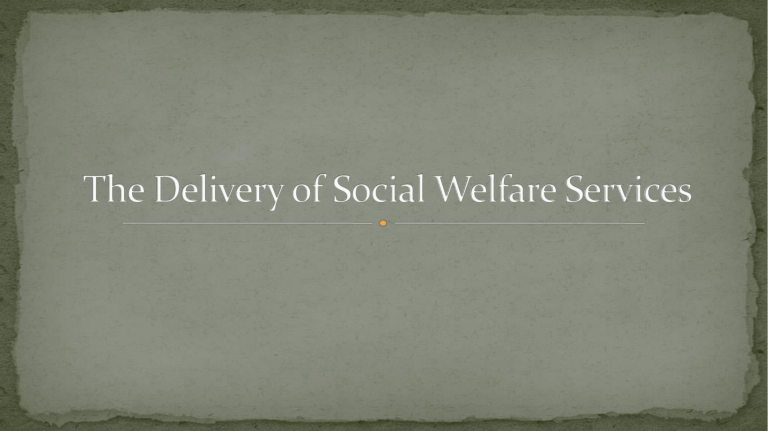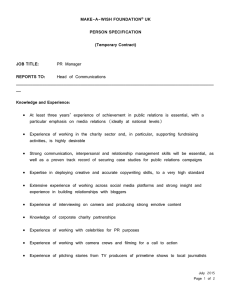
Considered to have been founded in 1898 via the NYC COS Early debate between Settlement Movement and Charity Organization Societies: focus on personal deficiencies or environmental problems? Early 20th century Professional Identity Crisis: Dr. Abraham Flexner: (1915) He delivered a paper he wrote on “Is social work a profession?” His conclusion: No. It lacks a unique methodology. Charity Organization Societies Settlement Movement Focus Specialized focus on individuals Focus on individuals as part of and families their communities Practice Emphasis Casework Group work and community organizing Macro Emphasis Coordination and organization of social services Social reform and political action Research Focus Scientific Methods used to determine need – emphasizing research on the individual Research on the community and social needs assessment Contribution to the field Training of professional social service providers Understanding strengths of cultural diversityT Federal Government: Largest contributor to social services. Also mandates and regulate policies that govern social services. State Government: Receives federal funds for provision of social services. Also provides some services independently. Local Government: Includes town councils, school boards, etc. Tribal Government: 573 tribal governments – all are officially sovereign. Non-Profit Organizations: voluntary charity groups with protected 501c3 status: tax-exempt, United Way, American Red Cross For Profit Organizations: Commercial agencies that provide social services. Profit making entities- Ex. Better World Books-online forprofit bookseller of used and new books – also donates books and percentage of profit to literacy programs around the world. Social Insurance: “cash benefits in the form of a transfer of money from the government to the individual” – eligibility can differ. Example: Social Security Cash Assistance Programs: A kind of public assistance – gov payment of money from taxes to those in need. Intended for basic necessities. Typically less than social insurance payments. Example: TANF, SSI In-Kind Benefit Programs: Rather than cash, these are services or commodities provided to eligible recipients. Example: Medicare, SNAP Vouchers: cross between in-kind and cash assistance. Earmarked for specific service or commodity, but recipient has more choice on where to use the voucher. Example: Housing (Section 8), WIC Entitlement: Mandated by law to give aid to all who are eligible and continue to meet the criteria. Social Security is a good example. Funding is not capped. Social Investment: Spending public money to help people and communities grow and develop, goal to improve social well-being. Example: Head Start Economic Development: Using policy or tax incentives to encourage economic growth in struggling communities (economically distressed). Example: Federal Empowerment Zones – IRS and US Department of Housing and Urban Development (tax incentives for businesses to stimulate the economy and to create new job opportunities for people living there.)


